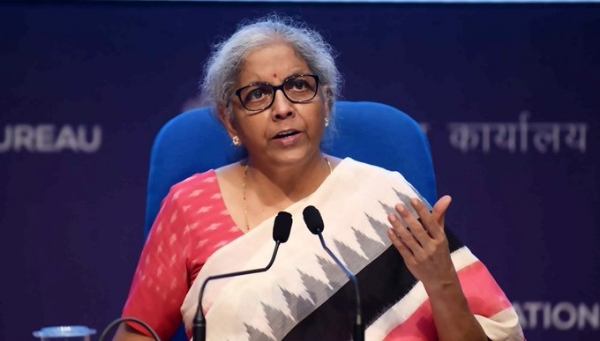Indian economy to grow at 16% in Q1 of FY22-23: Finance Ministry
Total Views |
New Delhi, Aug 27: Indian economy is most likely to grow at 16 percent in the first quarter of FY 2022-23 (YoY) from 4.1 percent in the previous quarter, expects DBS Group Research, as the official GDP figures are expected to be issued on 31 August. Apart from this, the research agency also predicts India's Gross Value Added (GVA) at 14.5 percent.

The research agency maintains an overall FY23 growth forecast of 7 percent, making India emerge as the fastest-growing economy in Asia this year.
"We forecast 2Q22 (1QFY23) at 16% YoY from 4.1% in the previous quarter, better than consensus. GVA growth is seen at 14.5%," said the DBS Group Research report on 25 August. However, the report said that with the strong prospects for the economy, the Reserve Bank of India (RBI) with more room for further interest rate hikes. "The stance of (RBI's) 'withdrawal of accommodation' suggests that benchmark rates are not yet at neutral levels, presumably one-two hikes away," it said. In the previous monetary policy committee meeting, RBI raised the repo rate by 50 basis points to 5.40 percent in order to contain the persistently high inflation. The latest hike took the repo rate above pre-pandemic levels of 5.15 percent. Since raising interest rates typically suppresses demand in the economy, it helps inflation to decline. India's retail inflation has been over the RBI's upper tolerance band of 6 percent for the seventh consecutive month in a row now. The RBI has so far hiked the key repo rate by 140 basis points in three instances and the reports see 60 basis points more hikes in the repo rate within FY23. However, the agency suggests a 35 basis points hike in September followed by another 25 basis points in December to take the repo rate to 6.0 percent, before settling into an extended pause. "With 140 basis points worth tightening behind us, we look for 60 basis points more hikes in the repo rate within FY23. Our call is for 35 basis points hike in September followed by another 25 basis points in December to take the repo rate to 6.0 percent, before settling into an extended pause," the report added.
Among other aspects, DBS Group Research's chief economist said that the unemployment rates have returned to pre-pandemic levels, with wage growth also improving, even as the labour participation rate lags 2019 levels. "Public capex is likely to be a bigger support in this cycle as private sector participation might be in the slow lane, due to rising input prices and renewed uncertainty over the global growth outlook," Rao wrote. Citing counterweights like heatwave on farm output followed by uneven start to the monsoon may add its effect on the sharp rise in commodity prices impinging on corporate margins and of course an uncertain global environment, the report said.